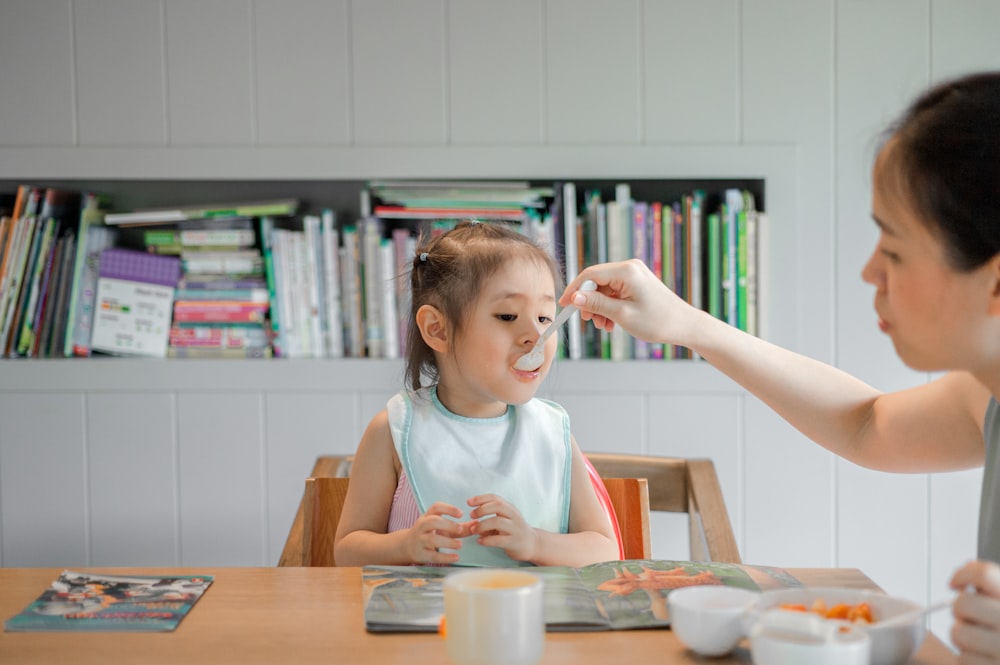If your child has a food allergy, you’re likely wondering about how you can best ensure they stay safe, no matter where they go. Figuring out how to manage food allergies can create a lot of stress for families. Fortunately, there are certain strategies you can draw on to create healthy dialogues about food allergies from the time your child is young. Crème de la Crème put together this guide to discussing food allergies in a healthy way, whether you’re helping to develop your child’s awareness of their own allergies or you’re working with your child’s school or other caregivers.
Talking to Your Child About Food Allergies

Image via Unsplash by daen_2chinda using Unsplash License
Adults with food allergies often feel overwhelmed, so imagine how allergies might feel for a child. Children, especially younger kids, may not fully understand what is happening with their bodies, and they might not have the right words to describe how they feel physically or emotionally. Clear communication goes a long way toward helping your child understand what their food allergy means and how they can take concrete action to stay safe.
Start simple when you’re creating healthy dialogues about food allergies with young children. Introduce just a few ideas at a time, starting off with key steps they can take to be safe:
- Explain that some foods can make your kid sick as a first step, using easy-to-grasp phrases like “unsafe food” and “safe food.”
- Teach your child what unsafe foods are called and what they usually look like, for example, bags of nuts or cartons of milk.
- Teach your child they should only eat foods they get from a parent or trusted adult, such as a grandparent, teacher, or babysitter who knows about their allergy.
- Make sure your child knows how to get to an adult if they need help or they’re feeling sick.
- Spell out your emergency plan in case of an allergic reaction ahead of time to help everyone stay calm in an emergency.
You should also strive to involve your kid so they understand why you do some things with their safety in mind. Do this from an early age, modeling food allergy management behaviors like reading food labels. Some tips to try include:
- Using “we” statements, like “We should read the ingredients in this snack to make sure it won’t make you sick.”
- Explaining food allergy management, using simple statements to reinforce ideas like never going anywhere without medication.
- Prompting your child to show their medical identification to get them used to telling other people about their allergy.
- Involving your kids in shopping for and cooking meals that are safe to eat.
Talking to Your Child’s School and Caregivers About Food Allergies
Of course, keeping your child safe involves the adults around them following best practices. It’s important to create healthy dialogues with the adults in your child’s life as well, including talking with your kid’s school and other caregivers.
Establishing a dialogue with your child’s school, day care, and other organizations starts with you knowing key details, including:
- Foods your child needs to avoid.
- Symptoms and signs of an allergic reaction in your child.
- How your child describes their allergic reactions.
- Treatments for your child, such as epinephrine.
You should learn about how schools generally manage food allergies and how your child’s particular school deals with food allergy management. It’s also a good idea to work with a licensed health care provider to build a Food Allergy Action Plan. This plan, which should include a current picture of your kid and the licensed provider’s signature, should cover:
- The complete list of food allergies your child has.
- Possible symptoms your child may have during an allergic reaction.
- When, how, and what treatment should be administered.
- Key contact information, including you, your child’s health care provider, and emergency medical services.
Once you have this necessary plan in place, you can take the essential step of informing your child’s teachers, school administrators, and school nurses about their food allergy. Before the first day of school, meet with members of this team to introduce yourself and share information, learn what they may already know about managing food allergies, and provide information while discussing everyone’s role. You may also choose to provide information to other parents and talking to your child’s classmates in an age-appropriate way.
Managing Food Allergies
All in all, healthy dialogues with both your child and the adults who care for them are all about keeping your kid safe. Since there are no cures for food allergies, everyone needs to be on board with managing the allergy by avoiding the food, as well as knowing how to treat an allergic reaction if your child does accidentally eat that food.
The only certain way to avoid food allergy symptoms is avoiding the unsafe food at all times. Of course, that’s easier said than done, especially when it comes to curious kids. Even if you work with a health care provider to create a plan in case your child does eat the food to which they are allergic, you can take certain actions to cut down on the risk that this happens:
- Read food labels carefully every time since ingredients can change.
- Avoid cross-contact of foods, such as putting a utensil used in peanut butter into jelly.
- Implement strict no-sharing rules with kids.
For very young children who only eat under the watchful eye of trusted adults, it’s easier to avoid problem foods. As kids get older and eat more frequently without adult supervision, the task gets more challenging. Healthy dialogues thus start by educating your child from an early age, then include healthy discussions with your child’s friends and their friend’s caregivers as your child gets older.
There you have it. Crème de la Crème just gave you some strategies to use when you’re navigating discussions about food allergies. Does your child have a food allergy? Do you have other tips to share with parents and caregivers who might be learning how to create healthy dialogues about food allergies for the first time? Drop us a line so we can share your recommendations.
